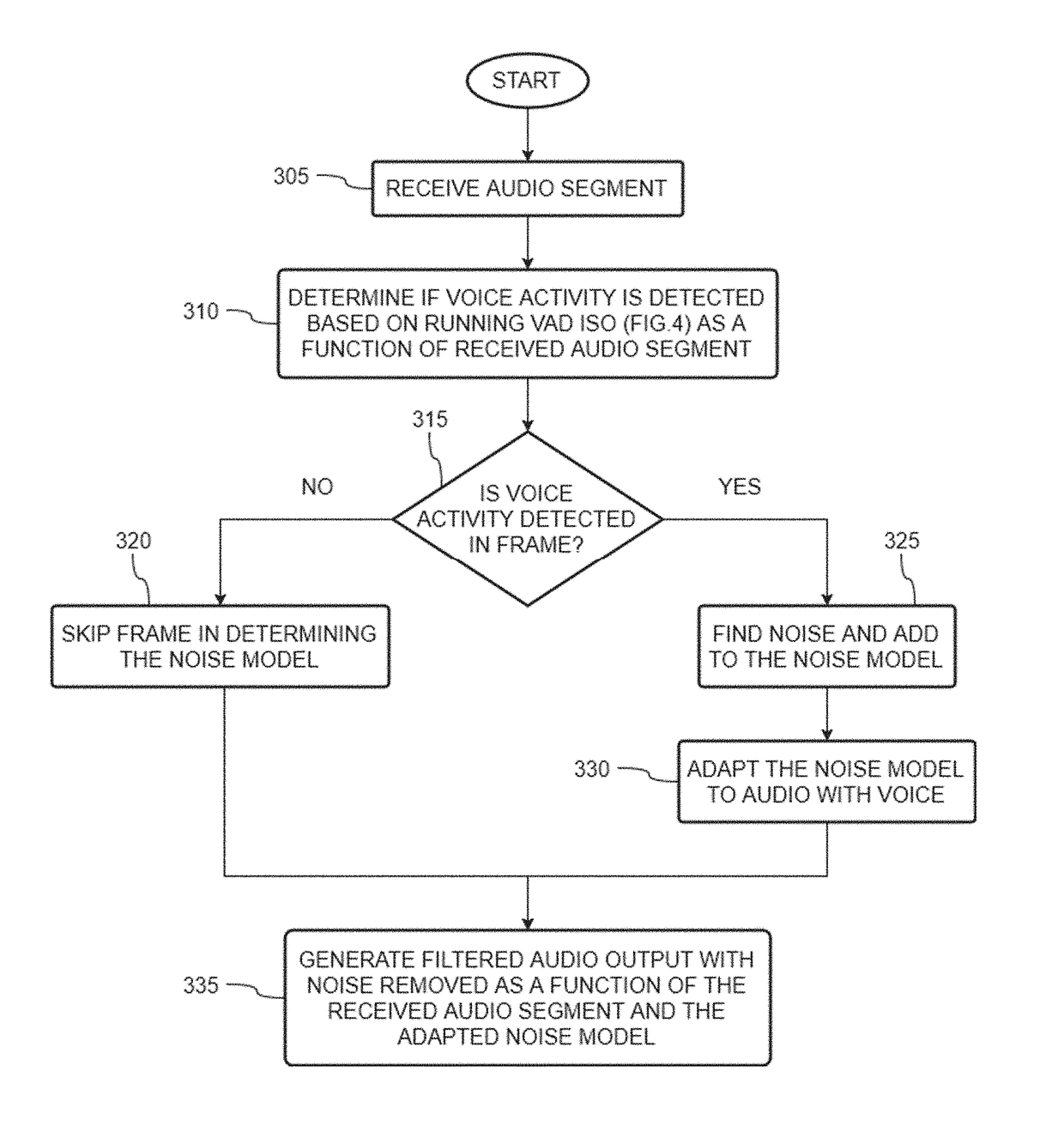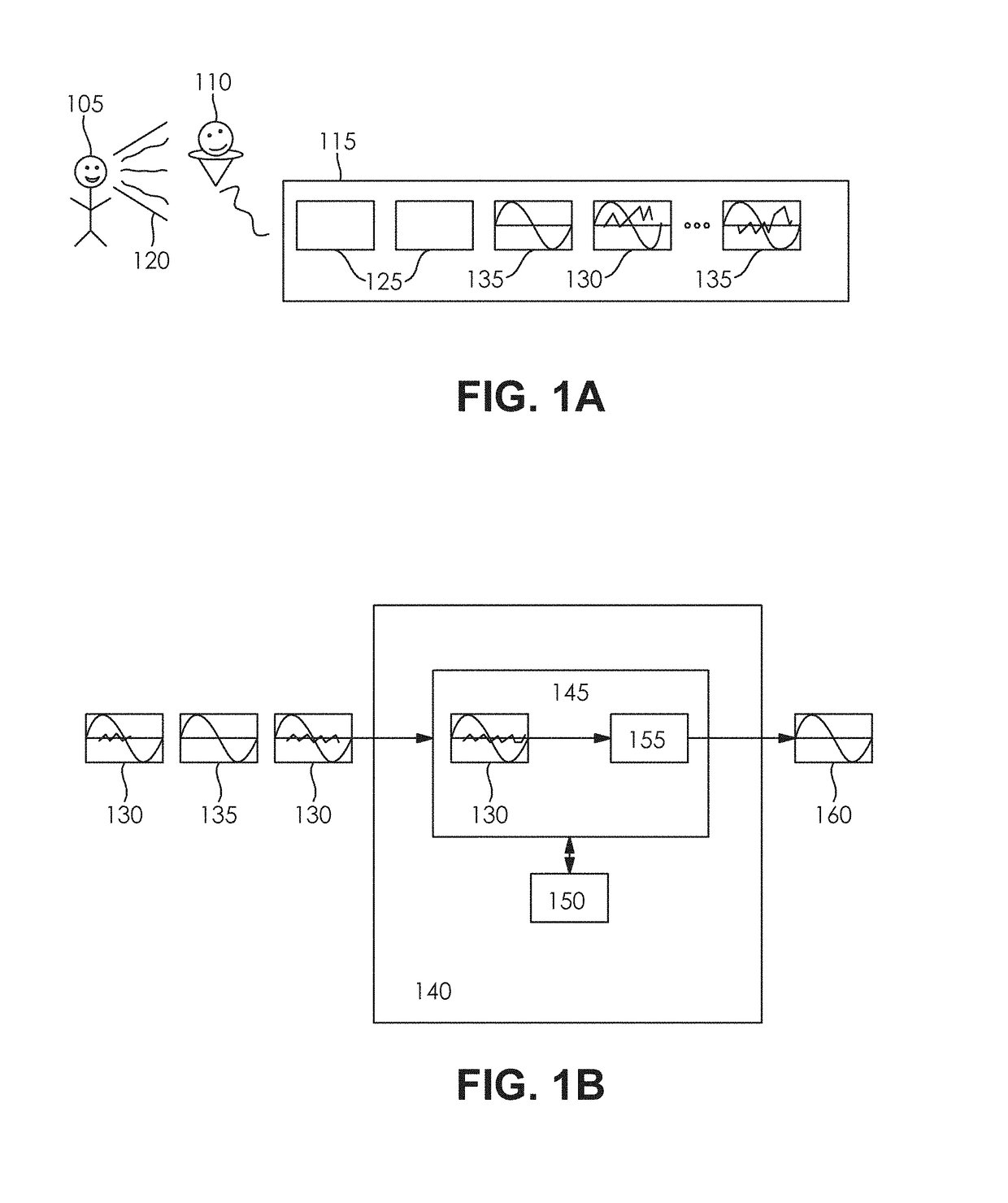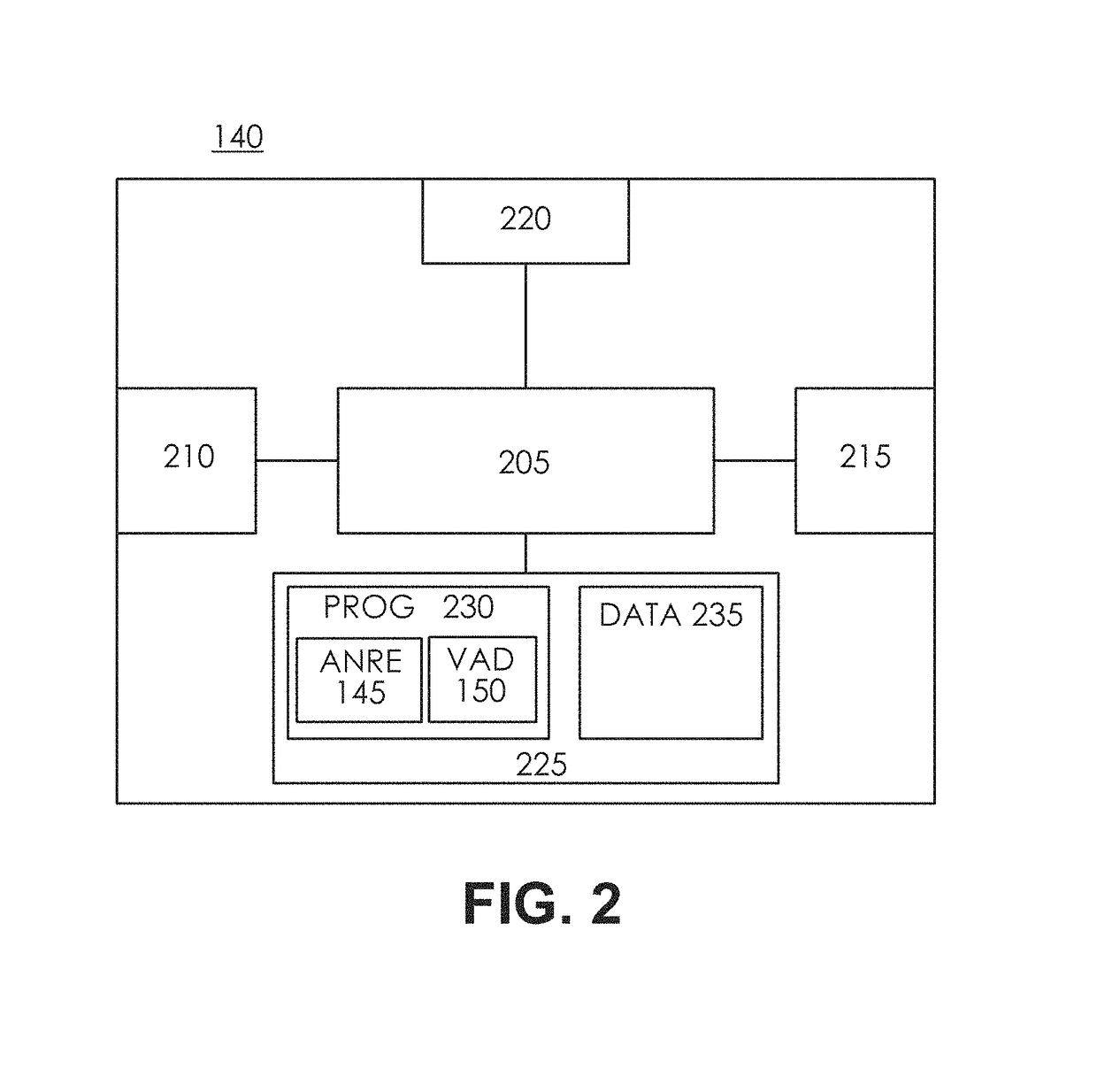System and method for automatically removing noise defects from sound recordings
a technology of automatic removal and sound recording, applied in the direction of electrical transducers, instruments, transmission, etc., can solve the problems of affecting the quality of sound recording, capturing noise defects from various electromagnetic or environmental sources, and noise in the sound recording become much more apparent, so as to improve the effect of improving the quality of segmented audio stream
- Summary
- Abstract
- Description
- Claims
- Application Information
AI Technical Summary
Benefits of technology
Problems solved by technology
Method used
Image
Examples
Embodiment Construction
[0040]To aid understanding, this document is organized as follows. First, automatically improving the quality of a segmented audio stream containing a desired signal, based on filtering an audio segment with an audio filter configured to remove a predetermined noise, and adapting the audio filter degree of noise removal determined as a function of a characteristic of the desired signal in the audio segment is briefly illustrated with reference to FIGS. 1A and 1B. Second, with reference to FIG. 2, the discussion turns to exemplary embodiments that illustrate the structure and design of an exemplary audio processing system. Then, with reference to FIG. 3, an illustrative process flow of an exemplary ANRE (Audio Noise Removal Engine) is described. Finally, with reference to FIG. 4, an illustrative process flow of an exemplary VAD (Voice Activity Detector) is presented.
[0041]FIGS. 1A and 1B depict an exemplary audio processing system automatically improving the quality of a segmented au...
PUM
 Login to View More
Login to View More Abstract
Description
Claims
Application Information
 Login to View More
Login to View More - R&D
- Intellectual Property
- Life Sciences
- Materials
- Tech Scout
- Unparalleled Data Quality
- Higher Quality Content
- 60% Fewer Hallucinations
Browse by: Latest US Patents, China's latest patents, Technical Efficacy Thesaurus, Application Domain, Technology Topic, Popular Technical Reports.
© 2025 PatSnap. All rights reserved.Legal|Privacy policy|Modern Slavery Act Transparency Statement|Sitemap|About US| Contact US: help@patsnap.com



